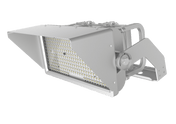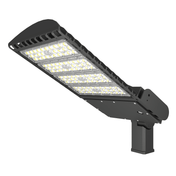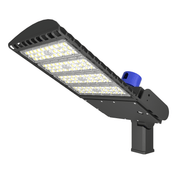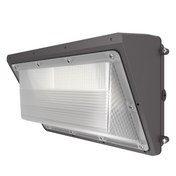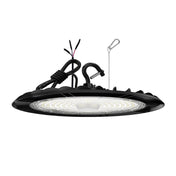Industrial and garage operators face a critical lighting paradox in 2024: 68% of facilities still rely on outdated metal halide lamps that waste 40% more energy than modern alternatives, yet 45% of buyers struggle to navigate the latest LED and smart lighting options (LumarySmart, 2024). This guide cuts through the noise by focusing on what matters most—technical clarity(scene adaptation), and long-term value. Whether you’re upgrading a 50,000 sq. ft. factory or retrofitting a residential garage, we’ll help you select high bay lights that balance brightness, efficiency, and future-proofing.
The high bay lighting landscape has evolved beyond basic LED upgrades. Two game-changing trends define 2024: AI integration and stricter efficiency standards.
a. AI-Powered Adaptive Lighting
Top-tier models like the Lumary AI UFO High Bay now use machine learning algorithms to adjust brightness based on real-time factors: occupancy patterns, natural light levels, and even task requirements. For example, in a factory assembly line, the system can automatically boost illumination to 1500 lux during precision work hours and dim to 300 lux during cleanup—cutting energy use by an additional 25-30% compared to standard LEDs (LumarySmart, 2024). Most AI-enabled fixtures also offer smartphone control via Alexa or Google Assistant, eliminating the need for manual adjustments in hard-to-reach areas.
b. Efficiency & Certification Must-Haves
2024 sees the widespread adoption of DLC 5.1 certification, the latest standard from the DesignLights Consortium. DLC-certified fixtures deliver a minimum efficacy of 130 lumens/watt (up from 110 lm/W in 2023) and ensure 70% lumen maintenance at 50,000 hours (Hykoont, 2024). For industrial buyers, this isn’t just a badge—many utility companies offer rebates of $0.10-$0.20 per kWh saved, slashing payback periods by 1-2 years. Avoid non-certified models: they typically fail to meet thermal management standards, leading to 30% shorter lifespans.
2. Product Showdown: UFO vs. Linear High Bays
The two dominant designs—UFO and linear—serve distinct purposes. Choosing the right one depends on your space’s height, layout, and lighting goals.
|
Feature
|
UFO High Bays
|
Linear High Bays
|
|
Best For
|
High ceilings (8-25m), open industrial spaces, warehouses
|
Medium ceilings (4-12m), corridors, garages, retail backrooms
|
|
Beam Angle
|
15-60° (narrow, focused coverage)
|
60-120° (wide, uniform distribution)
|
|
Installation
|
Hook/chain mount (30% faster than linear)
|
Surface or suspension mount (better for tight spaces)
|
|
Key Advantage
|
Superior heat dissipation (IP67 rating common)
|
Glare reduction (ideal for eye-sensitive tasks)
|
Pro Tip: For factories with 15m+ ceilings, UFO models like the Hylele 200W DLC-certified fixture outperform linear lights by 20% in lumen penetration. Garages under 8m should opt for linear high bays to avoid hotspots on vehicle surfaces.
3. Scene-Specific Buying Criteria
Lighting needs vary drastically between an automotive factory and a home garage. Use these tailored checklists to avoid costly mismatches.
a. Industrial/Factory Settings
-
Brightness (Lux): Precision work (e.g., electronics assembly) requires 1500-3000 lux; warehousing needs 300-750 lux (JCLGL, 2024). Calculate total lumens needed by multiplying square footage by lux requirement (e.g., 10,000 sq. ft. x 500 lux = 5,000,000 lumens total).
-
Durability**: IP65+ rating for dust resistance; IP67 if exposed to moisture (e.g., food processing plants). Look for die-cast aluminum housings to withstand vibration from machinery.
-
CRI**: Ra 90+ for color-sensitive tasks (e.g., painting, textile inspection); Ra 80+ for general areas.
b. Garage Lighting
-
Beam Angle: 90-120° to cover vehicle exteriors without shadows. A 2-car garage (500 sq. ft.) needs 2-4 linear high bays with 120° beam angles.
-
CCT: 5000K (natural white) for best color recognition when diagnosing vehicle issues; avoid 6500K (cool white), which causes eye strain during long repairs.
-
Dimming**: 0-10V dimmable fixtures let you adjust brightness for detailed work (e.g., engine repairs) vs. general parking.
4. TCO Breakdown: Why Cheap Fixtures Cost More
The upfront price tag is misleading. A $150 non-certified 100W LED may seem like a steal, but its TCO (Total Cost of Ownership) over 5 years is 2.3x higher than a $250 DLC-certified model:
Non-Certified 100W LED
-
Upfront Cost: $150
-
Energy Use ($0.15/kWh): $657
-
Replacement (every 2 years): $300
-
Total 5-Year Cost: $1,107
DLC-Certified 100W LED
5. Future-Proofing Your Purchase
2024’s smartest buys are designed for tomorrow’s technology. Look for fixtures with:
-
LoRaWAN Compatibility: Enables integration with warehouse management systems (WMS) for 2025’s AI-driven inventory tracking.
-
Modular Design: Allows adding sensors (e.g., temperature, motion) without replacing the entire fixture.
-
10-Year Warranties**: Top brands like Lumary and Hylele back their AI models with decade-long coverage, reflecting confidence in longevity.
Final 5-Step Selection Checklist
-
Measure ceiling height and calculate required lux (use factory/garage guides above).
-
Choose UFO or linear based on space layout and height.
-
Verify DLC 5.1 certification for energy savings and rebates.
-
Match IP rating and CRI to your specific environment.
-
Calculate TCO (include rebates) to avoid hidden costs.
The right
high bay lights aren’t just about illumination—they’re a strategic investment in efficiency and safety. By prioritizing 2024’s key technologies (AI, DLC 5.1) and matching fixtures to your unique (scene), you’ll create a lighting system that serves your space today and adapts to tomorrow’s needs. Remember: the best high bay light isn’t the cheapest or brightest—it’s the one that aligns perfectly with how you work.


